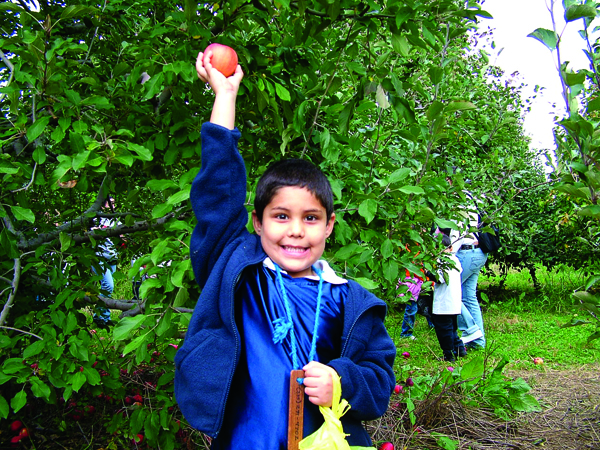 Involving young students is a key piece to the nutrition puzzle
Involving young students is a key piece to the nutrition puzzle
by Alex Mulcahy and Stephanie Singer
Around the world, there is a movement towards reconnecting people with how food is grown and produced. Empowering our youngest citizens may be our strongest strategy to create a healthier world.
More and more innovative school food programs have been developed over the last 10 years. The National Farm-to-School program, an organization that works to bring healthy foods from local farms to schoolchildren through the creation of community-based systems and education nationwide, counted three Farm-to-School programs in three states—California, Florida and North Carolina—in the 1995-96 school year. Their program has grown to over 2,000 in 40 states in 2008-09.
“I heard a story,” says Debra Eschmeyer, Director of Media and Marketing at the National Farm to School Network, “about a girl that was served watermelon for the first time in the cafeteria. She chewed it and said, ‘I’ve had this before! This is bubblegum.’ Access to healthy food is something that can be taken for granted, and these programs can fill the disconnect.”
It’s important to show that “food doesn’t come out of a package; it actually comes out of the ground.”
Here in Philadelphia, the Kindergarten Initiative, which was developed by the Food Trust, is an early intervention program in 18 schools in Philadelphia and the surrounding area. It’s a comprehensive program that combines food and agriculture education with locally grown, healthy snacks that are eaten inside the classroom as part of their curriculum. The program has a three-pronged attack:
First, teachers are trained throughout the year to present lessons about food that are integrated into their school day.
Next, the students participate in some tasty experiential education. The teacher distributes locally grown or produced foods and, with the help of flash cards, teaches the basics and some nuances about what they are eating. For example, in the fall, students will learn the different colors and varieties of apples in between bites.
Finally, parents are involved, too. The class goes on trips with parents to local farms two to three times per year, visiting the same farm during different seasons to witness planting and harvesting. Teachers also send an order form home with students so families can eat the same things that their kids are, i.e. apples, squash, peppers, sweet potatoes, spinach or purple beans.
Research proves the success of this model in a 10-year evaluation. A 2008 study showed that farm to school meals result in students eating, on average, one additional serving daily of fruits and vegetables.
Joan Nachmani, the Director of Philadelphia’s School District’s Eat.Right.Now program, reaches 152,315 students at 211 K-8 and 36 high schools each year with nutrition education. “We have a responsibility to educate, and can give the tools for kids to make better food choices,” she claims, adding, “When you have a chef come into the classroom, it becomes more special.” Indeed, last year, she joined forces with local celebrity and founder of the Health Education Initiative, Christina Pirello, who uses hands-on learning to engage students to become part of the process. Pirello made hummus from scratch with six kindergarten classes. “Out of 120 kids, only two did not eat the vegetable hummus wraps,” she claims. “When kids are part of the process, they want to eat what they made.”


